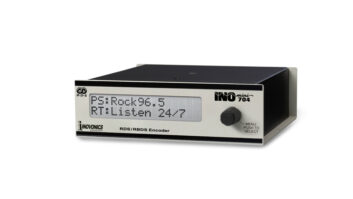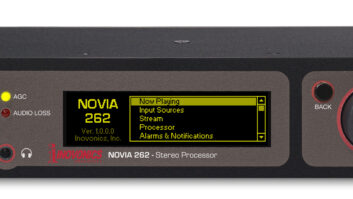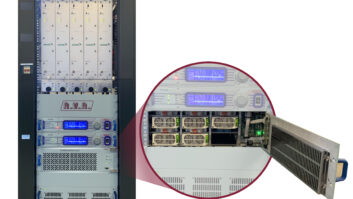Spread the cost of technology to match the timing of revenues and cash flow.
This concept sounds simple enough, yet many broadcasters, large and small, struggle with the idea that expensive equipment and technology must be paid out of the capital budget.
In turn the typical capital budgeting process often is an annual quagmire that delays needed equipment and technology or that forces engineers and general managers to “make do” with something less than optimal operating technology for the rest of the year.
One reason many broadcasters — independents and large groups — leverage outside capital (financing) is that it spreads costs over the life of the equipment and allows the technology to “pay for itself” over time, through use.
In this way a transmitter and antenna are “revenue-generating” and possibly cost-saving (energy). On a $50,000 transmitter the monthly payment is about $980 a month (at 7.5 percent interest), which works out to about $33 a day. A broadcaster may look at spot ad revenue and daily energy savings from a modern, more efficient transmitter and cost-justify the expense of the monthly payment.
Often radio clients find financing to be a creative business solution to their budget and cash flow needs. They value how it helps stretch their budget and align equipment costs to the timing of revenues.
It is a fact that most large companies invest their own capital in appreciating assets (land, buildings, people, acquisitions, growth) yet finance depreciating assets to match costs to revenues. By working with a creative lender or qualified financing source a broadcaster may find a unique and creative way to meet budget objectives.
This doesn’t necessarily mean long-term financing. Sometimes the best solution is no payments for six months then pay it off … without interest. Now that’s creative.
Cash flow solution
Often broadcasters are not aware of the many benefits and options available through financing.
Jane Elizabeth Pigg, owner of Pee Dee Broadcasting and WCRE(AM) in Cheraw, S.C., recently acquired a new transmitter and antenna through broadcast supplier SCMS. Bob Cauthen, president of SCMS, introduced her to the idea of financing her equipment needs at the 2007 NAB Radio Show in Charlotte.
“I hadn’t thought of financing as a business solution,” she says, “but when I looked at how attractive the financing option was and realized it would allow me to use my own capital to invest in our growth and other business operations including our newspaper, I just found it was a natural budget and cash flow solution for our station.”
Another prominent broadcaster who found specialized finance to be a creative solution is Beth Warren, general manager of KSUT Public Radio in Ignacio, Colo., and two flagship stations under KUTE Inc. Although their stations were awaiting CPB grants to cover the costs of four new transmitters, Warren found that Harris Finance offered a special “bridge” type financing for up to two years.
Under the Harris Finance plan KUTE has 2.9 percent financing for up to two years, which the organization can pay off at any time.
“We found that the specialized financing gave us a budget solution during the period awaiting the CPB to come through,” she said. “It allowed us to get the transmitters ordered and delivered before the winter weather. This was important to us, and the special financing was a creative timing tool to help us meet our budget. It also allowed us to ‘build it and they will come’ — after hearing the new stronger signal, donations came in on behalf of the private match needed for the projects.
“In Northwest New Mexico, KSUT replaced an 80 watt repeater with a 4,100 watt Harris-financed transmitter. The listener response has been fantastic,” she continued. “Additionally we had FCC-issued construction permits quickly expiring.” The creative financing option, she said, made the difference in continued public service on behalf of the listeners in the rural Four Corners Region.
Some of the reasons broadcasters leverage financing include:
- Financing helps the broadcaster retain and preserve cash and capital;
- Financing helps preserve bank credit lines for operations, working capital and acquisitions;
- Financing acts a “hedge against inflation” in that the broadcaster only pays for today’s use (of the technology) with today’s dollars and pays for future use with future (revenue) dollars;
- Fixed rate financing allows broadcasters to spread costs over multiple budget periods while creating a predictable monthly payment as much as five or seven years into the future;
- Financing lets the technology “pay for itself” over time.
Questions to ask
Independent, small and mid-market broadcasters may borrow infrequently and may not know what questions to ask a lender or financing source.
Determine your financial, budget and cash flow objectives, then seek a financing solution that accommodates your goals.
Ask your financing source how experienced they are with lending to radio stations and groups. Ask for three recent broadcaster references. Ask what criteria are used to determine credit approval and the interest rate.
Ask about fees. Ask if there is a pre-payment penalty for early payoff. Ask how long the process takes. Get a commitment to a step-by-step process so you know, in advance, what the procedure is. In most cases you should not have to submit an application fee or monies up front to get approved.
A good consultant can help you explore your options or compare a cash purchase to financing.
National City Media Finance is a division of National City Commercial Capital Company LLC, a subsidiary of National City Bank, Cleveland. The author has 30+ years’ experience of equipment financing, lending and technology leasing to the commercial broadcast, entertainment and media industries.
E-mail him via his site atwww.russmunson.tvor read his blog atwww.mediafinancestrategies.blogspot.com.












